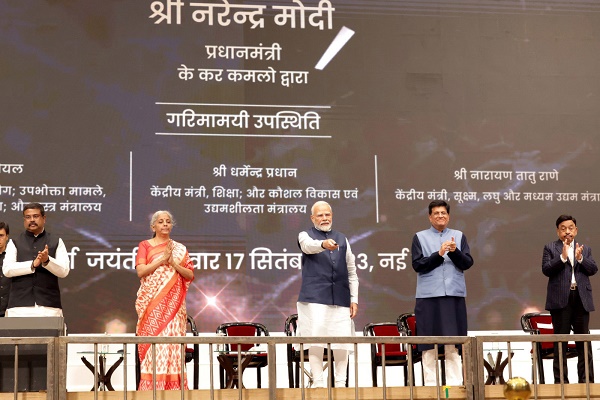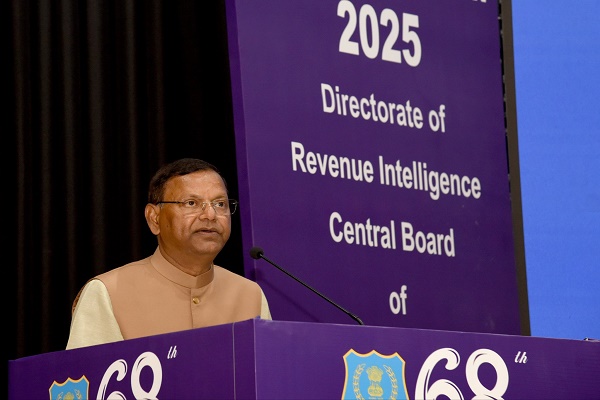The Economy Observer: Lower MGNREG work demand may be cyclical in nature - Motilal Oswal Financial Services

Lower MGNREG work demand may be cyclical in nature
One of the most significant fall-outs of the first wave of the COVID-19 pandemic was the mass exodus of casual urban workers back to their homeland. Lack of work in urban areas led to increased job demand under MG National Rural Employment Guarantee (MGNREG) scheme, leading to a 41.9% YoY growth in monthly employment in FY21, followed by a 34.6% growth in FY22 vis-à-vis FY20 levels. The average daily wage in FY21/22 was at only INR219/216 per person. Such a strong demand for job under MGNREG despite a paltry pay indicated a huge stress in India’s labor market. In this note, we update our analysis with 1HFY23 data (up to 14 th Oct’22) and make a few observations.
* First, employment demanded under MGNREG in 1QFY23 was only slightly lower than in 1QFY22 (that witnessed the second wave of COVID-19); however, it fell by as much as 38% YoY in 2QFY23 (Exhibit 1). Only 21.5mn workers per month demanded work under MGNREG in 2QFY23 (Exhibit 2), compared to 40mn/35mn in 1QFY23/2QFY22 and 20mn in the corresponding quarter in the pre-COVID period (FY18-FY20). Lower work demand under MGNREG in 2QFY23 could be either due to the structural factors reflecting improving labor market, leading to a reversal in the reverse migration or the cyclical factors such as sowing season or a combination of both.
* One way to find this out is to look at the monthly % changes during Jul-Sep month (i.e., the monsoon season). A comparison of Jul-Sep’22 vis-à-vis pre-COVID period (3- or 5-yr averages) suggests that while work demand fell faster in Jul’22, it declined at a slower pace in Aug’22, probably due to the base effect. Notably and worryingly though, MGNREG demand increased 5% MoM in Sep’22, compared to an average contraction of 8.4% in the pre-COVID period (Exhibit 3).
* Although the data is subject to revisions, it is also important to note that daily employment demand in the first 17 days of Oct’22 has risen sharply vis-à-vis 2QFY23 (Exhibit 4). Moreover, total employment under MGNREG stood at 68.2m as of 14th Oct’22, implying that monthly employment in 1HFY23 was closer to 11m individuals per month, much higher than from the monthly average of 9m persons in FY21/FY22 (Exhibit 5).
* Further investigation indicates that the share of young people (aged below years 30 years) that were employed in the MGNREG scheme during 1HFY23 has increased further to 11.5% of total employees, the highest in nine years. In contrast, the share of 31-50-year-old people has fallen, while it has been broadly stable for older population (Exhibit 6).
* A look at MGNREG financial statement also confirms that there is a shortfall (the difference between total fund availability and actual expenditure) of INR44b for all states as of 17th Oct, 2022. The three top states with shortfall are Tamil Nadu (INR17b), Madhya Pradesh (INR16b), and West Bengal (INR14b), while Manipur (INR7), Andhra Pradesh (INR4.3b), and Jharkhand (INR2.4b) are the three top states with surplus (Exhibit 7). More importantly, the Center has already released ~72% of its full-year budgeted allocation, which suggests that there could be an additional spending totaling INR200-300b under MGNREG in FY23 (Exhibit 8).
* Lastly, the average wage per day under MGNREG has increased to INR226/person in Sep’22 and averaged INR215.4/person in FY23 (Exhibit 9). In real terms, however, MGNREG wages continue to decline as inflation has outpaced nominal wage growth (Exhibit 10).
* Overall, a decline in the demand under MGNREG seems to be more linked with cyclical factors, which are likely to reverse in the coming weeks. If so, it is difficult to argue that India’s labor market has improved substantially in FY23. There is no doubt that a section of workers has moved back to urban areas; however, the pace of normalization is more gradual than expected, reflecting continued weakness or slow improvement in the labor market.
* At the same time, it is clear that the Center will have to increase its allocation toward MGNREG, probably totaling INR200-300b, in FY23.
To Read Complete Report & Disclaimer Click Here
For More Motilal Oswal Securities Ltd Disclaimer http://www.motilaloswal.com/MOSLdisclaimer/disclaimer.html SEBI Registration number is INH000000412
Above views are of the author and not of the website kindly read disclaimer



















